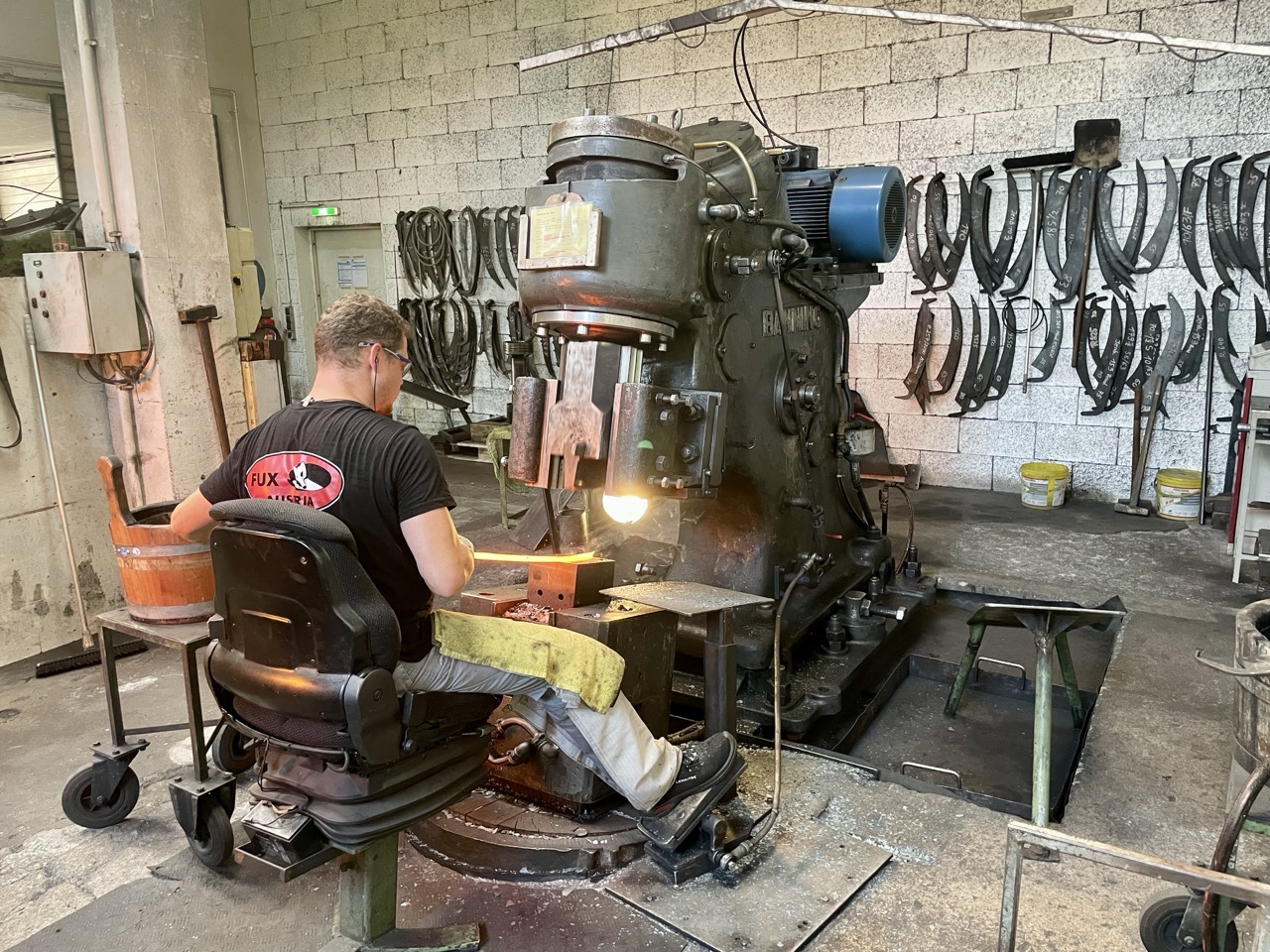Traditional scythe production: An craft that has lasted for centuries
Mowing grass with a scythe is an activity associated with traditional rural life and manual labour. However, behind this simple tool lies a precise manufacturing process that requires skill, experience and a passion for the craft. In this blog, we take a look at the fascinating world of traditional scythe making and how a piece of steel is turned into a tool that can tame even the wildest meadow.
Carbon steel: The basis of a quality scythe
The path to the perfect scythe begins with selecting the right material. In our case, this is German carbon steel flat bar, which is known for its strength, flexibility and ability to hold a sharp edge. This special steel is the result of many years of development and its composition is a closely guarded secret.
From semi-finished product to knob: the first steps to a functional tool
A semi-finished scythe is cut from the flat bar, which is then shortened to the required length. The tang is then bent and shaped to form a knob, which is used to attach the scythe to the snath. These first steps are crucial for the proper functionality and ergonomics of the scythe.
Heating and expanding: Blacksmithing in practice
The next step is to heat the semi-finished product to a temperature of 1200 degrees, at which the steel becomes malleable and pliable. The broadener then gradually bends and widens the scythe, giving it the desired shape and thickness. This process requires a feel for the material and the ability to predict how the steel will behave.
Ribbing and bombing: The secret of strength and stability
After stretching, a rib is formed on the scythe, which is crucial for its strength and stability. The blade is then bombed, i.e. bent into a slightly curved shape. Bombing increases the rigidity of the blade and allows it to better withstand the stress of mowing.

Polishing and hardening: Precision work with attention to detail
The blade is gradually polished and hardened in several technical steps. Blacksmiths use various techniques, such as embossing fine structures, to increase the blade's resistance.
Peening the cutting edge: The final touch for perfect sharpness
The next-to-last step is peening the scythe's cutting edge to give it the necessary sharpness. An experienced worker can peen the blade so that it is even.
Richter: A guarantee of quality
The final step is to check the quality and evenness of the scythe. The Richter fine-tunes any inaccuracies and ensures that each scythe meets the highest standards.
Protective coating: For a long life and a sharp edge
Finally, a protective coating is applied to the tang of the scythe and the entire blade is covered with a protective lacquer to prevent corrosion. These measures ensure that the scythe does not rust before it reaches the customer.
A tradition that lives on
Traditional scythe production is a craft that requires patience, skill and attention to detail. It is an art that is passed down from generation to generation and reminds us that even in this age of modern technology, manual labour and traditional crafts still have an irreplaceable place.
